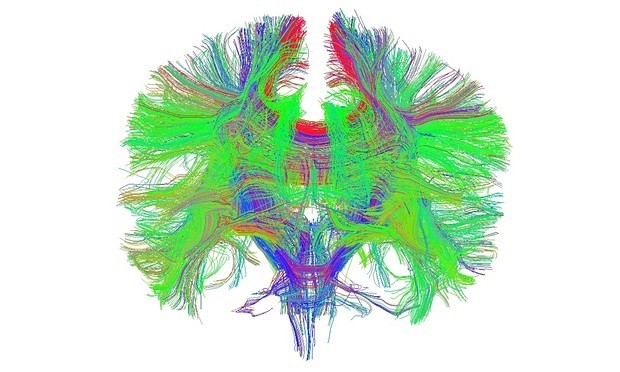Brain Fibers, Left and Right Side Brain Communication Subject of Two Studies
A study published in the December issue of Biological Psychiatry attempts to understand how the THC in marijuana creates psychosis-like effects, similar to those in schizophrenia. A different study, published in Europe, looked into the brain fibers of those who use high-potency marijuana and how they differ from non-users, specifically addressing how the two sides of the brain communicate. The authors concluded that “frequent use of high-potency cannabis is associated with disturbed callosal microstructural organization in individuals with and without psychosis.”
The American study, announced in a medical bulletin of December 3, reports that ∆9-THC increases random neural activity, termed neural noise, in the brains of healthy human subjects. The findings suggest that increased neural noise may play a role in the psychosis-like effects of cannabis.
In the past, several studies have demonstrated that the primary active constituent of cannabis, delta-9-tetrahydrocannabinol (∆9-THC), induces transient psychosis-like effects in healthy subjects similar to those observed in schizophrenia. However, the mechanisms underlying these effects are not clear.
“At doses roughly equivalent to half or a single joint, ∆9-THC produced psychosis-like effects and increased neural noise in humans,” explained senior author Dr. Deepak Cyril D’Souza, a Professor of Psychiatry at Yale School of Medicine.
“The dose-dependent and strong positive relationship between these two findings suggest that the psychosis-like effects of cannabis may be related to neural noise which disrupts the brain’s normal information processing,” added first author Dr. Jose Cortes-Briones, a Postdoctoral Associate in Psychiatry at Yale School of Medicine.
The investigators studied the effects of ∆9-THC on electrical brain activity in 24 human subjects who participated in a three-day study during which they received two doses of intravenous ∆9-THC or placebo in a double-blind, randomized, cross-over, and counterbalanced design.
If confirmed, the link between neural noise and psychosis could shed light on the biology of some of the symptoms associated with schizophrenia.
“This interesting study suggests a commonality between the effects on the brain of the major active ingredient in marijuana and symptoms of schizophrenia,” stated Dr. John Krystal, Editor of Biological Psychiatry. “The impairment of cortical function by ∆9-THC could underlie some of the cognitive effects of marijuana. Not only does this finding aid our understanding of the processes underlying psychosis, it underscores an important concern in the debate surrounding medical and legalized access to marijuana.”
Communication Between Left and Right Halves of Brain Affected by THC
The other study was conducted at King’s College, London, and at the Sapienza University (the University of Rome). The authors describe the study: “The use of cannabis with higher Δ9-tetrahydrocannabinol content has been associated with greater risk, and earlier onset, of psychosis. However, the effect of cannabis potency on brain morphology has never been explored. Here, we investigated whether cannabis potency and pattern of use are associated with changes in corpus callosum (CC) microstructural organization, in patients with first-episode psychosis (FEP) and individuals without psychosis, cannabis users and non-users.” The authors noted that high potency cannabis is what has replaced the smoked plant of a weaker THC.
High-strength cannabis may damage nerve fibers that handle the flow of messages across the two halves of the brain, scientists claim. Brain scans of people who regularly smoked strong marijuana revealed subtle differences in the white matter that connects the left and right hemispheres and carries signals from one side of the brain to the other. The corpus callosum is rich in cannabinoid receptors, on which the THC chemical acts.
The difference between cannabis users and non-users was only for those who smoked the potent form of the drug, the researchers found. “Raising awareness about the risks of high-potency cannabis is crucial.”
With the intricate computer imagery available today and the chance to study brains affected by THC, we may help us to better understand psychosis and schizophrenia.

